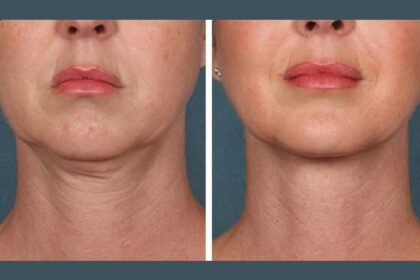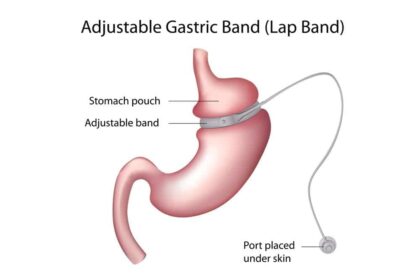ENT diseases are often accompanied by nosebleeds, which significantly impair the patient’s quality of life. To completely stop the bleeding, special medications can be used to cauterize the inflamed vessel and prevent its rupture. Nasal cautery involves applying an active substance to the mucous membrane, which reduces the severity of inflammation in the nasal cavity and prevents recurrent nosebleeds. The following drugs can be used for this purpose: Chromic anhydride, Collargol, Trichloroacetic acid, Protargol, and Silver nitrate in solution. The procedure is performed under local anesthesia. First, a numbing aerosol is sprayed into the nasal cavity. A cotton swab soaked in the active substance is then inserted into the nasal passages. After a short time, it is removed. The treatment area is lubricated with vegetable oil to speed up mucosal recovery.
Indications for the procedure
Before undergoing treatment, it is necessary to consult with an otolaryngologist to determine the appropriateness of the procedure. Medicinal cauterization of nasal vessels is performed in the presence of the following diseases:
- Acute or chronic sinusitis;
- Allergic, hypertrophic, or drug-induced rhinitis;
- Nasal breathing disorder;
- Chronic sinusitis;
- Presence of regular nosebleeds.
Advantages of undergoing the procedure
Advantages of undergoing the procedure at the Consultant ENT. Everyone has experienced a sudden nosebleed at least once in their life. Most often, people try folk remedies to stop it or wait for the problem to resolve itself. However, this is a mistake, as medical professionals consider this a warning sign and should not ignore it. Statistics show that one in 10 patients is hospitalized in an ENT department due to a nosebleed. Practicing otolaryngologists identify the following causes of this pathological condition:
1. Local
The most bleeding part of the nose is the Kiesselbach zone; bleeding from it can be caused by:
- trauma;
- foreign object;
- diseases that provoke increased blood flow to the mucous membranes – adenoiditis (inflammation of the pharyngeal tonsils), otitis (inflammation of the ear structures), and chronic rhinitis (sluggish inflammation of the nasal structures).
The source of hemorrhage is the destruction of the mucous membrane, tumor-like formations, or a significant change in the shape of the anatomical structure dividing the nasal cavity.
2. General
The source of the problem may be far from the ENT doctor’s area of expertise; the malaise may be caused by:
- diseases of the cardiovascular system;
- deficiency of vitamins and essential microelements;
- hemorrhagic syndrome;
- increase in body temperature;
- pathologically occurring pregnancy;
- excessive isolation;
- rapid sexual development.
It’s important to know that even the slightest nosebleed warrants a visit to an otolaryngologist—it’s impossible to determine the cause on your own! The main symptoms of this pathological condition are blood leaking from the nasal passages or blood flowing from the nasopharynx. Massive blood loss is accompanied by general weakness, dizziness, increased heart rate, tinnitus, and pallor of the skin and mucous membranes. It’s best to entrust the treatment of the bleeding to an experienced specialist, who will not only provide qualified assistance but also determine the nature of the problem, establish its causes, and prescribe further diagnostic tests and treatment.
Before visiting a medical facility
Before visiting a medical facility, a number of simple steps can be taken to stabilize the victim’s condition. Sit the victim up, tilt their head slightly forward, and place a cotton swab soaked in hydrogen peroxide solution in one nostril. Apply an ice pack to the bridge of the nose. However, self-help is only possible with minor bleeding! Tilting the head back or lying down is strictly prohibited, as this will only increase bleeding. It’s important to remember that these measures don’t solve the problem, but only alleviate its symptoms. A high-quality, long-term outcome can only be achieved after a visit to an ENT specialist West Yorkshire. To determine the true cause, it’s necessary to examine the patient, stop the bleeding, collect medical history data, and conduct a comprehensive examination.
A suitable method
There’s no universal method for stopping a nosebleed that can be applied in all situations. A suitable method can only be selected based on the results of a thorough initial examination, the severity of the bleeding, its cause, and its nature. If the vessels in the anterior nasal cavity are damaged, the doctor performs anterior packing by inserting a long tampon into the nostrils and folding it in an accordion-like fashion. (Attempts to perform this procedure at home are not recommended, as incorrect insertion of the tampon can worsen the problem.)
Tamponade is performed
At the Consultant ENT private Clinic, tamponade is performed on an outpatient basis using an innovative method (safer and less painful than traditional methods): a special sponge is soaked in an antibacterial solution and inserted into the nasal cavity. After the bleeding has stopped, the patient returns home. More extensive blood loss, which is typical due to damage to the posterior nasal capillaries (they have a larger diameter), requires a posterior tamponade—a complex procedure performed in a day hospital.
Suffering from recurrent nosebleeds
Our clinic is frequently visited by patients suffering from recurrent nosebleeds. These are caused by regular trauma to the mucous membranes and the development of ulcers that periodically bleed. In these cases, the bleeding never stops on its own and requires the help of qualified specialists! Another method used to treat this type of problem is vasotomy (direct cauterization of the blood vessels located in the nasal cavity). This procedure can successfully relieve the patient in just one session, but it requires a high level of skill and experience on the part of the physician. First, the otolaryngologist applies an anesthetic to the bleeding site (this helps avoid discomfort during the procedure) and performs cauterization.
life-threatening problem
A nosebleed is not only an unpleasant but also a life-threatening problem! To address the underlying cause, not just the external symptoms, all of the above-mentioned methods for stopping bleeding must be accompanied by appropriate therapeutic measures. Attempts to stop severe bleeding on your own and failure to seek prompt medical attention typically result in significant blood loss and serious complications. Don’t risk your health – entrust it to the doctors at the Consultant ENT!
Contraindications to the use of funds
Treatment with medicinal cauterization is contraindicated in the presence of severe diseases that significantly worsen the patient’s condition. These include:
- Acute infections with a severe course;
- Heart pathologies in the decompensated phase;
- Blood clotting disorders – the presence of thrombocytopathy, hemophilia, and other coagulation defects;
- Severe renal or hepatic insufficiency.
A contraindication to the procedure is also individual intolerance to the active substance or painkiller used for local anesthesia.
Medicinal cauterization is an effective
Thus, medicinal cauterization is an effective treatment method that can relieve nosebleeds. The procedure is quick and painless, so the risk of complications after the procedure is minimal. This allows this treatment method to be widely used in clinical practice. Nasal cautery is a safe, quick, and effective treatment method for controlling and preventing recurrent nosebleeds. By sealing the affected blood vessels and reducing inflammation in the nasal mucosa, this procedure helps restore comfort, prevents further bleeding, and improves overall quality of life. Under the supervision of an experienced ENT specialist, nasal cautery provides lasting relief with minimal discomfort and low risk of complications.





